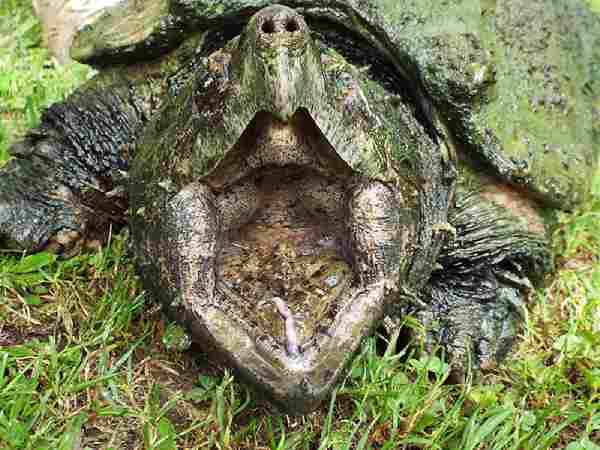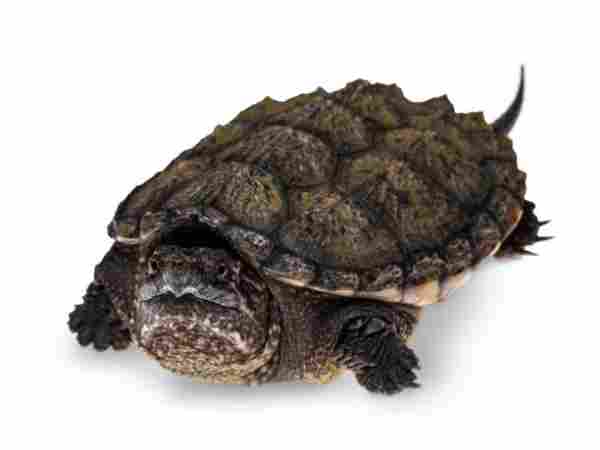Tennessee is full of diverse wildlife, and one of its more distinct residents is the Snapping Turtles. Commonly found near rivers and streams throughout the state, these reptiles make for truly unique sights when out in nature. With their sharp beak and pointy tails, they are sure to grab your attention.
What’s more, they can carry up to 75 per cent of their body weight with ease, which makes them amongst some of Tennessee’s hardiest creatures. In this article, we will tell you interesting facts about snapping turtles in Tennessee.

Table of Contents
Alligator Snapping Turtle Tennessee
The Alligator Snapping Turtle is a unique species found in the Tennessee region. The turtle features an unusual look, including a spiked shell and powerful jaws that can easily snap through a fishing line with ease. It is considered an incredibly large species of turtle and can weigh up to 200 pounds while reaching lengths of almost three feet. This makes it one of the largest turtle species in the world. The Alligator Snapping Turtle is an iconic creature in Tennessee, both respected by locals and marvelled at by visitors.
Are Snapping Turtles in Tennessee Protected?
Snapping turtles in Tennessee, are considered a Species of Special Concern, as they are facing declining population numbers. The state has taken several initiatives to ensure that they remain protected, including establishing laws regarding the hunting and harvesting of turtles in certain areas. Specific regulations exist with regard to size restrictions and bag limits when it comes to harvesting them for personal use. Boaters must also be mindful of the potential impacts of disturbances on nesting sites and the animals which share their habitats.

Habitat
Snapping turtles are a native species to Tennessee and are found in many bodies of water throughout the state. The ideal habitat for turtles consists of quiet, slow-flowing streams, rivers, and ponds that have an abundance of aquatic vegetation. This vegetation provides shelter for the animals as well as a food source for grazing during their summer months. Turtles also prefer shallow waters that don’t experience large temperature variations from day to night or season to season.
Lifespan
The average lifespan for snapping turtles can range anywhere from 20 – 50 years. This is due to a combination of factors such as the availability of food, their natural predators, and their environment. They require plenty of access to sunlight in this area, which is essential for healthy growth.

Weight
The average weight of a snapping turtle found in the state of Tennessee is quite impressive. Adults tend to average their size around 10-35 pounds, with some reaching up to 50 pounds or more.
Diet
Snapping turtles in Tennessee, primarily feed on fish, crayfish, mussels and clams as well as insects and amphibians such as frogs and salamanders. They will often scavenge on carrion or feed on birds, small mammals or vegetation.
Length
In terms of length, male snapping turtles can range from 10-18 inches long, while their female counterpart can range from 12-20 inches long.
Colour
Snapping turtles in Tennessee are underwater reptiles renowned for their unique colouration which varies from shades of green and brown to yellow, giving them the nickname “Painted Turtle”. The large eyes and hooked, snapping jaws make them particularly distinctive and famously feared predators of other aquatic creatures.
Predator
In the wild, larger species such as raccoons and large fish are likely to prey upon snapping turtles. Other experiences in snake habitats also suggest that snakes may hunt them as well. While human hunters have never been known to prey on turtles, boat motors can cause fatal injury if a turtle gets too close. The most important predator for snapping turtles in Tennessee might be humans who disrupt their natural environment and take eggs from their nests

How harmful are snapping turtles?
Snapping turtles in Tennessee may have an intimidating appearance, but in most cases, they pose no real threat to people. That being said, the greatest danger of these reptiles lies in their powerful jaws and large claws. While snapping turtles don’t typically attack humans, careless handling can still cause skin tears and puncture wounds. Most human injuries from snapping turtles occur when someone steps on a turtle that is sunning itself on land or inadvertently surprises them while swimming in the water.
What to do if you find a snapping turtle in your yard?
If you find a snapping turtle in your yard, the best thing to do is assess the situation from a safe distance. Snapping turtles can be territorial and feisty and may hiss, bite or lunge at someone who approaches too closely. Chances are the turtle is just passing through your area and doesn’t need help finding its way back home but it’s always better to err on the side of caution when dealing with wild animals. If you believe that the turtle isn’t in danger and doesn’t require rescuing, consider taking some steps to make sure it has access to food or water if necessary or obtain professional advice from a wildlife rehabilitator.
References:
https://www.tn.gov/twra/wildlife/reptiles/turtle/snapping-turtle.html
https://www.eregulations.com/tennessee/fishing/turtles
https://harpethconservancy.org/our-work/science-restoration/river-science/turtles-harpeth-river/

Jeevan Kodiyan
An animal enthusiast with an interest in zoology, studying the behavior and activities of animals in the wild habitat. I work on research projects related to species conservation and endangered species protection. I also leverage zoology to become an educator, educating others about the importance of protecting our natural environment and the beauty of animals in their natural habitats.









